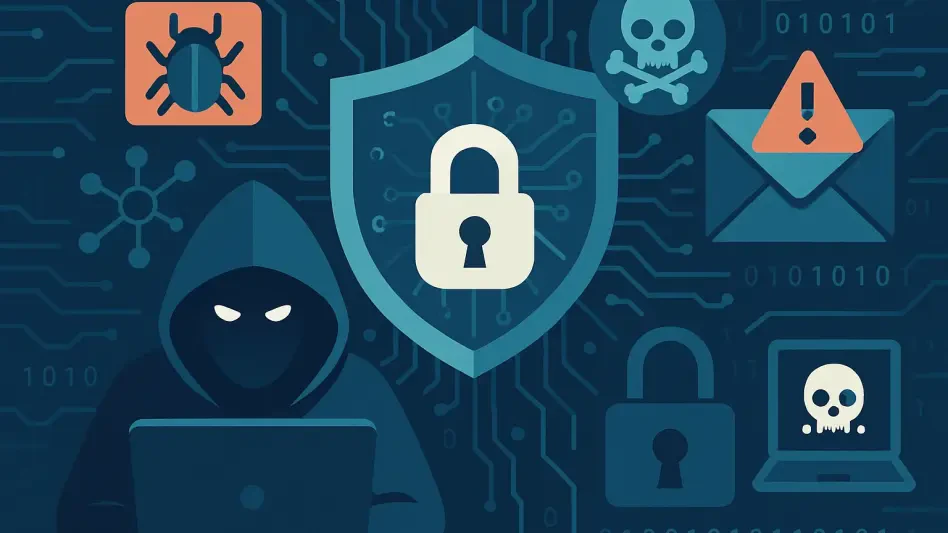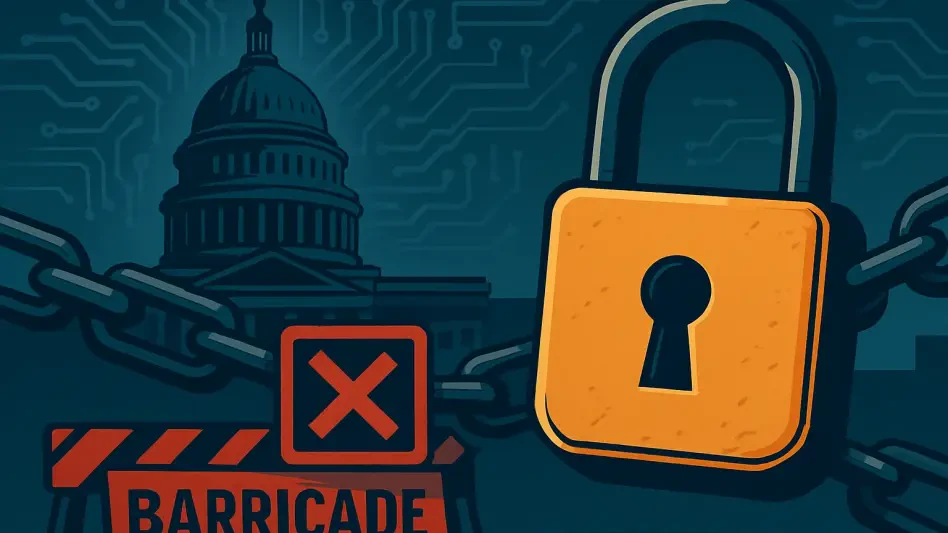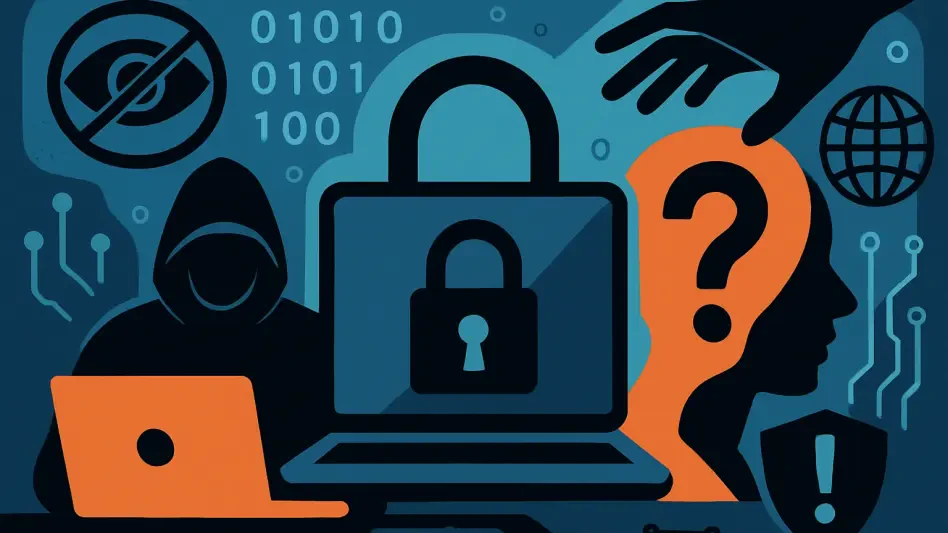The recent release of IBM’s X-Force team’s 2024 Cloud Threat Landscape Report has sparked discussions about the state of cloud security. A significant highlight from the report is the substantial decrease in mentions of SaaS platforms on dark web marketplaces, indicating possible advancements in cybersecurity measures. This trend suggests that actions taken by companies and law enforcement have successfully made these platforms less attractive targets for cybercriminals. However, this positive indication doesn’t imply that the cloud security landscape is free from challenges. This article navigates through the key findings, overarching trends, and nuanced perspectives presented in the IBM report.
Decrease in SaaS Mentions on Dark Web
The IBM X-Force team’s 2024 Cloud Threat Landscape Report reveals a significant 20.4% year-over-year average decrease in mentions of SaaS platforms on dark web marketplaces. This trend is generally perceived as a positive indicator of improved cybersecurity. Notably, WordPress-Admin experienced a striking 98% reduction in mentions, marking it as the most significant decline among observed platforms. Following closely, Microsoft Active Directory saw a 44% drop, and ServiceNow experienced a 38% decrease. These figures suggest that enhanced security measures and vigilance from these service providers have contributed to these positive trends.
Interestingly, Microsoft TeamViewer deviated from this general trend by experiencing a 9% increase in mentions on dark web marketplaces. This anomaly might indicate that while the majority of platforms have strengthened their defenses successfully, some areas still possess vulnerabilities requiring further attention. The collaboration between IBM’s X-Force team and Cybersixgill produced these updated statistics, underlining the importance of continued monitoring and agile adaptation within cybersecurity strategies. It serves as a reminder that comprehensive security efforts must be consistently maintained to effectively combat evolving threats.
Potential Contributors to the Decrease
Several critical factors might contribute to the observed decline in mentions of SaaS platforms on the dark web. One notable contributor is the advancement in cybersecurity defenses. Enterprises are increasingly adopting stronger security protocols aimed at protecting their cloud infrastructure, making it more challenging for cybercriminals to exploit these systems. Measures such as the implementation of multi-factor authentication, strict access controls, and continuous monitoring appear to have played significant roles in reducing the attractiveness of these platforms for malicious activities.
Additionally, increased law enforcement actions have evidently played a pivotal role in disrupting major players on the dark web. The FBI’s takedown of Raccoon Stealer in August 2023 exemplifies the impact of such measures. This dominant infostealer malware was a significant source of stolen credentials, accounting for a large portion of the market. Its removal led to a drastic reduction in available credentials, from 1.2 million in March 2023 to 721,000 by July 2024. The overall market has struggled to recover since this major disruption, indicating the effectiveness of coordinated law enforcement actions in mitigating cyber threats.
Impact of Raccoon Stealer Takedown
The takedown of Raccoon Stealer by the FBI marked a substantial victory in the fight against cybercrime, causing a profound impact on the dark web marketplace. At its peak, Raccoon Stealer accounted for nearly 87% of stolen logs and 50% of compromised credentials, making it a linchpin in the underground market. The removal of this malware by law enforcement agencies led to a significant drop in the availability of stolen credentials, illustrating a clear correlation between the operations of this malware and the dark web market’s dynamics. This disruption significantly hampered cybercriminals’ operations and contributed to the decline in SaaS mentions observed in IBM’s report.
According to Colin Connor of IBM’s X-Force team, the takedown of Raccoon Stealer disrupted a major source of compromised credentials, making it more difficult for cybercriminals to carry out attacks. This diminished availability of stolen credentials has been a crucial factor in the overall decline of SaaS mentions on the dark web. The importance of law enforcement’s role in combating cyber threats and protecting cloud infrastructure is emphasized through such successful operations. This ongoing battle underscores the necessity of a continuous effort and vigilance to ensure that gains in cybersecurity are sustained and built upon.
Emerging Threat Actors
Despite the decline in mentions of major SaaS platforms, the rise of smaller malicious actors remains an area of concern. Threat actors like Luma, RisePro, and Stealc have shown increased activity, suggesting a shift from larger to more diverse threat actors. For instance, Luma notably experienced a 241% increase in popularity in Q3 2024, indicating that while major threats might be mitigated, new, smaller threats are continually emerging. This shift underscores the need for organizations to avoid complacency and to remain vigilant in their cybersecurity efforts.
The presence and growth of these emerging threat actors imply that maintaining robust cybersecurity measures is crucial. Organizations must actively refine and enhance their security strategies to defend against these evolving threats. Continuous improvement in security testing and incident response capabilities is essential for staying ahead of cybercriminals. By maintaining proactive and dynamic security protocols, businesses can mitigate the risks associated with these emerging threats and ensure a resilient defense against potential cyberattacks.
Proactive Security Measures
The recent release of IBM’s X-Force team’s 2024 Cloud Threat Landscape Report has sparked detailed discussions about the current state of cloud security. A key highlight from this comprehensive report is the notable decline in the mentions of SaaS platforms on dark web marketplaces. This reduction points to potential advancements in cybersecurity measures, suggesting that actions taken by businesses and law enforcement agencies have effectively made these platforms less appealing to cybercriminals. However, this encouraging trend doesn’t mean the cloud security landscape is devoid of challenges. The report dives into critical findings, overarching trends, and detailed perspectives that provide a nuanced understanding of the present and future cloud security environment. Through careful analysis, it becomes evident that while progress has been made, ongoing vigilance and innovation are essential to address emerging threats and fortify defenses in the ever-evolving digital landscape.







